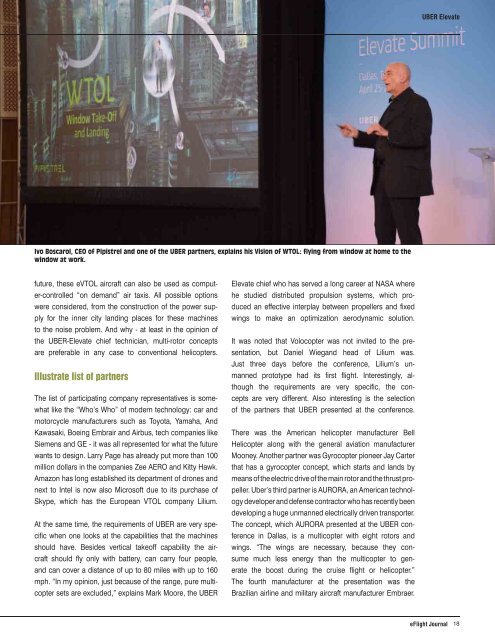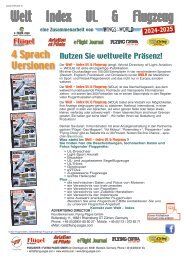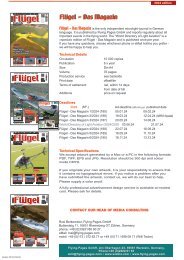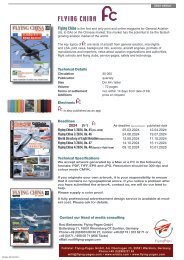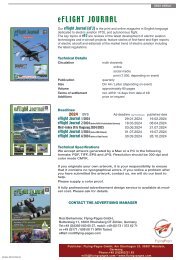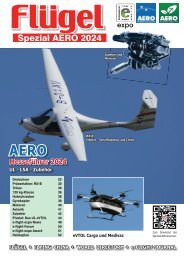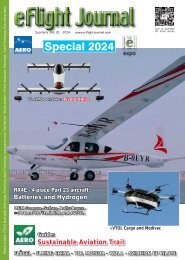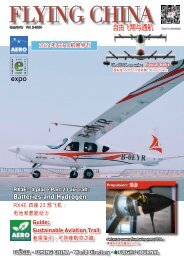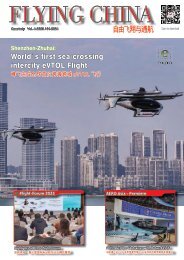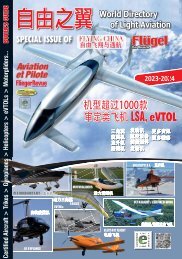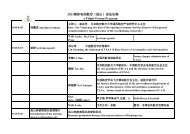Create successful ePaper yourself
Turn your PDF publications into a flip-book with our unique Google optimized e-Paper software.
Uber UBER elevate Elevate<br />
Ivo Boscarol, CEO of Pipistrel and one of the UBER partners, explains his Vision of WTOL: flying from window at home to the<br />
window at work.<br />
future, these eVTOL aircraft can also be used as computer-controlled<br />
“on demand” air taxis. All possible options<br />
were considered, from the construction of the power supply<br />
for the inner city landing places for these machines<br />
to the noise problem. And why - at least in the opinion of<br />
the UBER-Elevate chief technician, multi-rotor concepts<br />
are preferable in any case to conventional helicopters.<br />
Illustrate list of partners<br />
The list of participating company representatives is somewhat<br />
like the “Who’s Who” of modern technology: car and<br />
motorcycle manufacturers such as Toyota, Yamaha, And<br />
Kawasaki, Boeing Embrair and Airbus, tech companies like<br />
Siemens and GE - it was all represented for what the future<br />
wants to design. Larry Page has already put more than 100<br />
million dollars in the companies Zee AERO and Kitty Hawk.<br />
Amazon has long established its department of drones and<br />
next to Intel is now also Microsoft due to its purchase of<br />
Skype, which has the European VTOL company Lilium.<br />
At the same time, the requirements of UBER are very specific<br />
when one looks at the capabilities that the machines<br />
should have. Besides vertical takeoff capability the aircraft<br />
should fly only with battery, can carry four people,<br />
and can cover a distance of up to 80 miles with up to 160<br />
mph. “In my opinion, just because of the range, pure multicopter<br />
sets are excluded,” explains Mark Moore, the UBER<br />
Elevate chief who has served a long career at NASA where<br />
he studied distributed propulsion systems, which produced<br />
an effective interplay between propellers and fixed<br />
wings to make an optimization aerodynamic solution.<br />
It was noted that Volocopter was not invited to the presentation,<br />
but Daniel Wiegand head of Lilium was.<br />
Just three days before the conference, Lilium’s unmanned<br />
prototype had its first <strong>flight</strong>. Interestingly, although<br />
the requirements are very specific, the concepts<br />
are very different. Also interesting is the selection<br />
of the partners that UBER presented at the conference.<br />
There was the American helicopter manufacturer Bell<br />
Helicopter along with the general aviation manufacturer<br />
Mooney. Another partner was Gyrocopter pioneer Jay Carter<br />
that has a gyrocopter concept, which starts and lands by<br />
means of the electric drive of the main rotor and the thrust propeller.<br />
Uber’s third partner is AURORA, an American technology<br />
developer and defense contractor who has recently been<br />
developing a huge unmanned electrically driven transporter.<br />
The concept, which AURORA presented at the UBER conference<br />
in Dallas, is a multicopter with eight rotors and<br />
wings. “The wings are necessary, because they consume<br />
much less energy than the multicopter to generate<br />
the boost during the cruise <strong>flight</strong> or helicopter.”<br />
The fourth manufacturer at the presentation was the<br />
Brazilian airline and military aircraft manufacturer Embraer.<br />
e Flight Journal<br />
18


